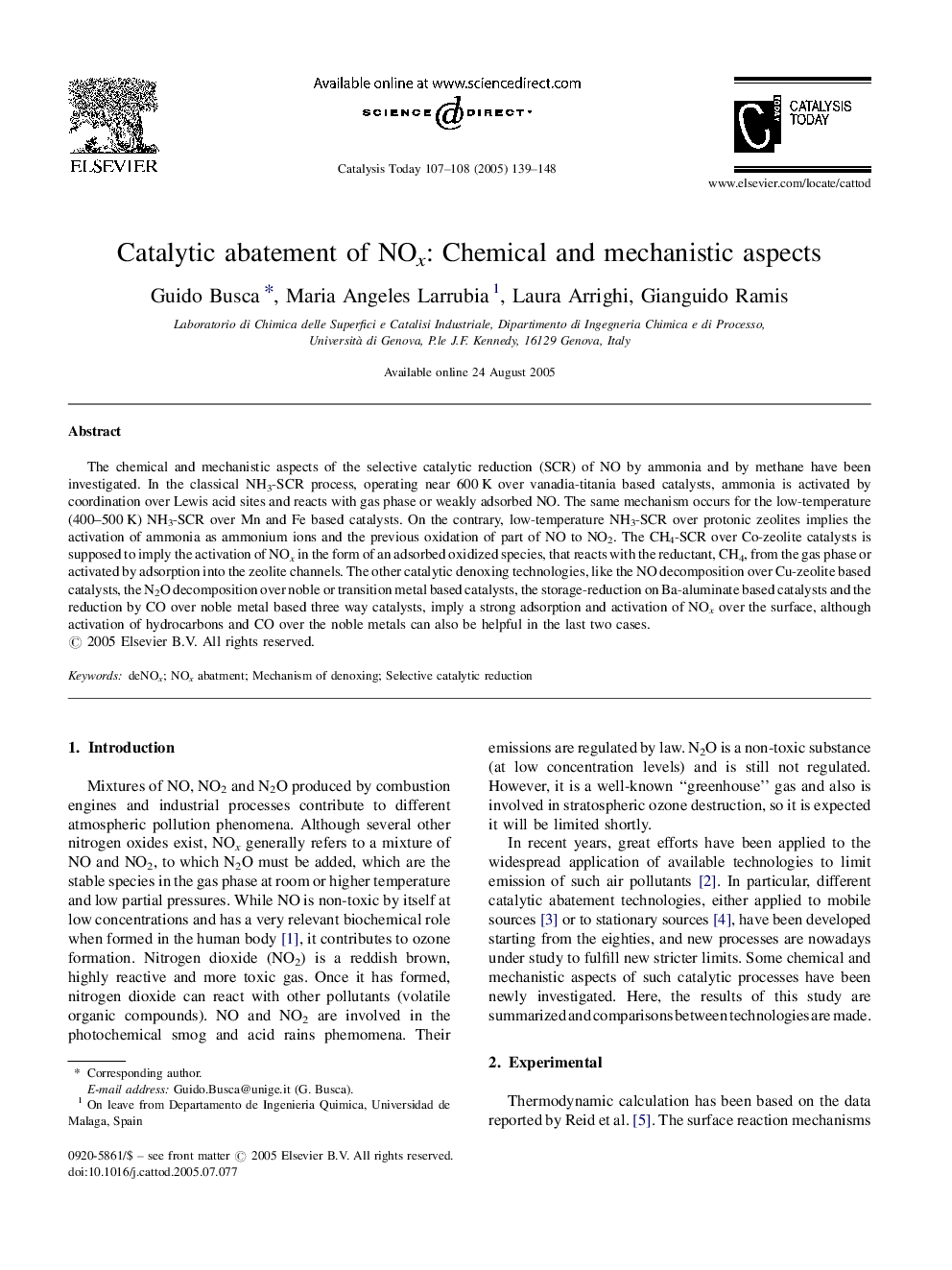| Article ID | Journal | Published Year | Pages | File Type |
|---|---|---|---|---|
| 9610178 | Catalysis Today | 2005 | 10 Pages |
Abstract
The chemical and mechanistic aspects of the selective catalytic reduction (SCR) of NO by ammonia and by methane have been investigated. In the classical NH3-SCR process, operating near 600Â K over vanadia-titania based catalysts, ammonia is activated by coordination over Lewis acid sites and reacts with gas phase or weakly adsorbed NO. The same mechanism occurs for the low-temperature (400-500Â K) NH3-SCR over Mn and Fe based catalysts. On the contrary, low-temperature NH3-SCR over protonic zeolites implies the activation of ammonia as ammonium ions and the previous oxidation of part of NO to NO2. The CH4-SCR over Co-zeolite catalysts is supposed to imply the activation of NOx in the form of an adsorbed oxidized species, that reacts with the reductant, CH4, from the gas phase or activated by adsorption into the zeolite channels. The other catalytic denoxing technologies, like the NO decomposition over Cu-zeolite based catalysts, the N2O decomposition over noble or transition metal based catalysts, the storage-reduction on Ba-aluminate based catalysts and the reduction by CO over noble metal based three way catalysts, imply a strong adsorption and activation of NOx over the surface, although activation of hydrocarbons and CO over the noble metals can also be helpful in the last two cases.
Keywords
Related Topics
Physical Sciences and Engineering
Chemical Engineering
Catalysis
Authors
Guido Busca, Maria Angeles Larrubia, Laura Arrighi, Gianguido Ramis,
